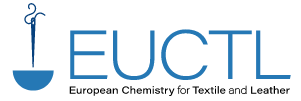From present to future: EU rules for safe management and communication on chemicals
A wide range of European legislative frameworks regulate or have a bearing on the use of chemicals in production processes, their environmental emissions and/or their presence in final articles. CLP and REACH were born out of the need to identify and assess hazardous substances, including production processes and final articles in which they are present to better protect human health and the environment; for these substances, REACH defines limit values, chemicals management measures or applies restrictions. Additional limits and rules on chemicals are set in regulations on waste, emissions to water and air, as well on health and safety at workplaces, which are applicable to production plants.
Looking at the textiles and leather value chains, apart from the rules on chemicals that apply to the whole industrial system, specific REACH restriction has been introduced for 33 substances classified as carcinogenic, mutagenic or toxic for reproduction and specific rules are set on the emissions to the environment from production sites that perform pre-treatment (operations such as washing, bleaching, mercerisation) or dyeing of textile fibres or textiles
A key instrument for transparency on chemicals along the values chains is the Safety Data Sheet, a document containing information on properties and hazards, instructions for handling, disposal and transport, and first aid, firefighting and exposure control measures, compulsory for hazardous chemicals manufactured or imported in the EU. It is used as a means of communication between businesses and valued by the operators who have to handle chemicals, e.g., tanneries or plants performing dyeing of textiles.
Over the coming years, big changes are envisaged: the European Commission is actively considering new rules on ecodesign and communication that will target – among other priority sectors - the textile value chain. One of the main targets is to set up the so-called Digital Product Passport for articles, a digital tool enabling sharing of product-related information, and targeted access for different stakeholders, from producers to authorities and consumers.
EUCTL and its membership will actively follow the development of these new rules. Particular attention will be paid to the need of protecting confidential business information, which is crucial for competition among different market players, and it is a key factor in the creation of innovative products.
Chemical companies and their commitments beyond regulation
The European Textile and Leather Chemicals industry’s commitment to transparency goes further, spearheading best practices beyond the requirements set out in existing legislation.
One example of this commitment is that, over the last decades, most companies have signed-up and adhered to different voluntary schemes promoted by private operators aimed at minimizing the use of chemicals listed as hazardous substances, accompanied by third party tracking and auditing: these schemes often include a certification that can be reported on the final articles that consumers buy, that entail significant efforts in terms of people involved in and money committed to the production and certification of data.
It is in this spirit of strong and continuing commitment to transparency that our sector sees the project of the EU on Digital Product Passports as an opportunity for further improvement: the passport could provide an innovative tool that could represent a unique and reliable point of reference for the consumer, offering relevant information on safety and sustainability of the textiles products they buy.
In & out from the EU borders: transparency on chemicals in the global arena
A huge amount of products, from chemical mixtures to garments and other textiles and leather consumer articles are imported in Europe, from countries which currently do not have well-established chemicals management systems. The chemical industry thus supports capacity building efforts to foster the implementation of GHS in regions outside the EU. Looking at the complex and international textiles and leather value chains and at the huge concentration of manufacturing sites in non-EU countries (e.g., India and Bangladesh) such engagement is considered really important to boost safety at a global scale.
Concerning European rules on chemicals management and transparency, EUCTL underlines the importance of ensuring a level playing field between EU and non-EU competitors: thus, a well-structured and functioning control system must be in place, to check compliance to EU rules both for European and imported products.
Referring to commitment beyond regulation, EUCTL underlines that its members have developed relevant projects outside the EU as well. By way of example, TEGEWA implemented the project "Promoting Safe Use of Chemicals in Bangladeshi Tanneries" (PSUC) from 2019 to 2022 in the form of a PPP (Public Private Partnership) with the BMZ (German Federal Ministry for Economic Cooperation and Development) and the NGO Solidaridad. The objectives included establishing a chemical management system and improving occupational safety for tannery employees in the Savar Leather Cluster in Dhaka. For this purpose, training modules were developed and used to train more than 1200 workers and tannery managers on how to prevent or deal with accidents and incidents. By training trainers from among the project participants, the transfer of knowledge is ensured even after the end of the project. The training materials will be integrated into the UNIDO (United Nations Industrial Development Organization) e-learning platform.

